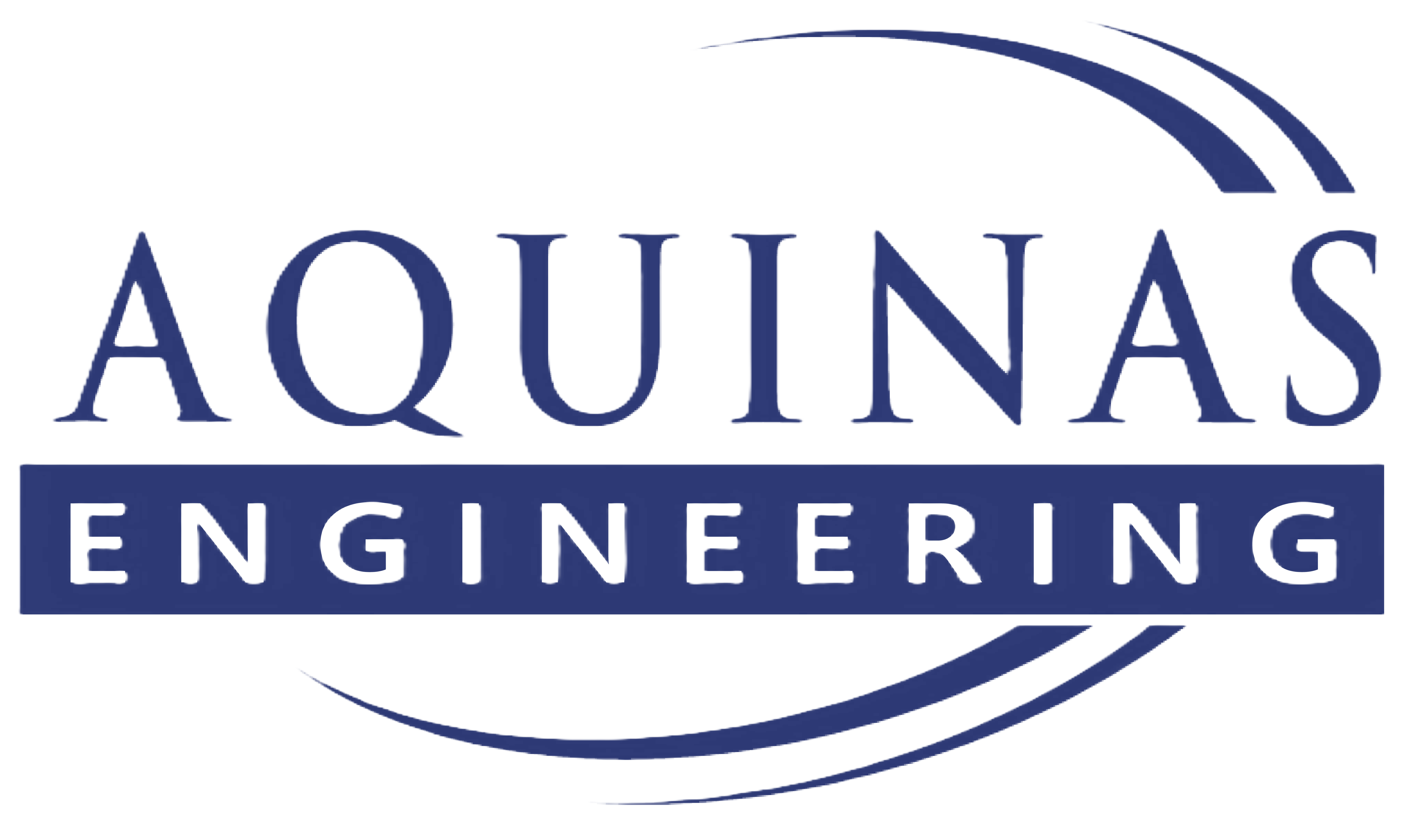In the quest for sustainable and innovative design solutions, engineers and architects are increasingly turning to nature for inspiration. Biomimicry, the practice of modeling structures and systems after biological entities, offers a wealth of insights that can be applied to the built environment. From the geodesic domes of the Eden Project in the UK to the naturally ventilated Eastgate Centre in Zimbabwe, nature’s influence on architecture is both profound and practical. One of the most intriguing examples of this is the turtle shell—a natural marvel that has evolved over millions of years to provide unparalleled protection, flexibility, and efficiency. Just as turtles rely on their shells for survival, buildings depend on their envelopes to shield against environmental challenges and maintain internal stability. This article explores how the principles behind the design of turtle shells can inform and improve the development of building envelopes, leading to structures that are not only more resilient and energy-efficient but also better integrated with their surrounding environment.
From Anatomy to Architecture: Lessons from Turtle Shells
In the realm of structural engineering, the building envelope is a critical component that serves as the first line of defense against environmental factors. It functions similarly to a turtle’s shell, which is an evolutionary marvel designed to protect and support the reptile throughout its life. Both systems—turtle shells and building envelopes—are composed of multiple layers and materials, each serving a specific purpose that contributes to the overall integrity and efficiency of the structure.
Building Envelope and Turtle Shell Composition
A building envelope typically includes elements such as walls, roofing systems, glazing, insulation, and exterior cladding, all working in tandem to separate the interior from external forces. These components are crucial in maintaining thermal regulation, moisture control, and overall structural integrity. Similarly, the turtle’s shell is composed of three primary parts: the carapace (dorsal section), the plastron (ventral section), and the bridge that connects the two. Each section of the shell plays a unique role in the turtle’s survival, much like each component of a building envelope contributes to the stability and sustainability of a structure.
-
Structural Rigidness and Load Distribution:
The turtle’s carapace is primarily made of ossified rib bones fused with dermal bone, providing a rigid and durable structure that can withstand significant impact and pressure. The shell’s structure is analogous to the load-bearing walls and roofing systems in buildings, which are designed to handle various loads, including dead loads (the weight of the structure itself), live loads (occupancy or environmental forces like wind and snow), and seismic loads.
For example, in structural engineering, load distribution is key to ensuring that buildings can withstand environmental forces without compromising integrity. In a turtle shell, the arrangement of the plates—proneural, neural, suprapygal, and pygal—along with the peripheral plates, distributes impact forces evenly across the shell. This principle is mirrored in architectural design, where the strategic placement of load-bearing elements like columns, beams, and shear walls helps distribute forces and prevent structural failure.
-
Multi-Layered Protection:
The outermost layer of the turtle shell, covered by scutes made of keratin, provides a tough, protective barrier against external threats, including predators and environmental hazards. This layer is comparable to the exterior cladding and weatherproofing membranes used in building envelopes, which protect the structure from rain, wind, and temperature fluctuations. Just as the scutes shield the bony plates from physical damage, modern cladding materials—ranging from metal panels to fiber-cement boards—protect the underlying structural elements from moisture penetration and thermal stress.
Advanced building envelopes incorporate materials like high-performance insulation and vapor barriers, which work together to maintain internal temperatures and prevent moisture intrusion. In structural engineering, this is akin to the “skin” of the building, where layers of waterproofing and insulation are meticulously applied to ensure durability and energy efficiency. These layers are crucial in preventing issues like thermal bridging, condensation, and mold growth, which can compromise both the structural integrity and the indoor environmental quality.
-
Flexibility and Resilience:
Despite its rigid appearance, the turtle’s shell is designed to be both strong and flexible. Ligaments and muscles connect the various plates of the shell, allowing it to absorb shocks and adapt to external forces without breaking. This adaptability is crucial for the turtle’s survival, especially when encountering predators or navigating challenging terrain.
In building design, this concept of flexibility is reflected in materials and systems that allow structures to absorb and dissipate energy during events like earthquakes. For example, modern buildings in seismic zones often include base isolators, which act like shock absorbers, allowing the building to move independently of the ground motion. Similarly, advanced materials like shape memory alloys and high-strength composite materials can be integrated into building envelopes to provide both rigidity and the ability to flex under stress, much like the turtle’s shell.
-
Thermal Regulation and Energy Efficiency:
The turtle shell plays a vital role in thermoregulation, helping the reptile maintain its body temperature by absorbing heat from the environment or, in some species, insulating against cold temperatures. In architecture, building envelopes are designed to perform similar functions, using insulation materials and glazing systems to manage heat transfer and ensure thermal comfort for occupants.
High-performance insulation materials, such as spray foam or rigid foam boards, are critical in minimizing heat loss or gain through the building envelope, akin to how the turtle’s shell minimizes heat exchange with its environment. Additionally, the use of thermal mass in building design—such as concrete walls or floors that absorb and slowly release heat—parallels the turtle’s ability to regulate temperature through the mass of its shell.

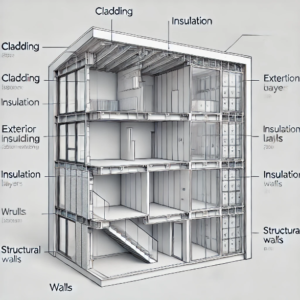
The accompanying visual aid illustrates the striking parallels between the structure of a turtle shell and the components of a building envelope. On the left, the turtle shell is highlighted, showing its carapace, plates, and scutes, which collectively provide protection, structural integrity, and environmental resistance. On the right, the building envelope is depicted, featuring key elements such as exterior cladding, insulation layers, and structural walls. Just as the turtle shell shields and supports the animal, the building envelope serves to protect the structure from external forces while maintaining a stable and comfortable internal environment. This comparison underscores the concept of biomimicry, where nature’s time-tested designs inspire innovative solutions in architecture and engineering.
Key Insights
By examining the structure and function of a turtle’s shell, structural engineers can uncover valuable lessons for designing building envelopes that are resilient, adaptable, and efficient. The multi-layered approach seen in both natural and architectural systems highlights the importance of integrating various materials and techniques to achieve optimal performance. Whether it’s through strategic load distribution, the application of advanced materials for flexibility and thermal regulation, or cutting-edge waterproofing systems, the lessons drawn from nature offer a blueprint for innovative solutions in modern building design.
These natural design principles not only provide structural insights but also offer a holistic approach to enhancing building performance. Each component of the turtle shell—from its rigid bony plates to its flexible connective tissues—serves a distinct purpose, much like the layers of a building envelope. In the following sections, we will explore how these principles can be applied to specific aspects of building performance, including protection against environmental forces, thermal regulation, and water management. By understanding and applying these connections, engineers can draw from nature’s time-tested solutions to create more resilient and efficient structures.
Protection and Structural Integrity
Building envelopes protect against thermal stress, UV radiation, noise pollution and enhance structural integrity, much like turtle shells support and structure the turtle’s body. Both building envelopes and turtle shells serve as protective barriers. A building envelope is durable and shields the interior from external elements such as weather, earthquakes, and natural disasters. The bone of a turtle’s shell is rigid but also layered with a skin-like material covered in keratin. The multiple layers help improve insulation, weather resistance, and structural integrity. While a turtle’s robust shell protects it from environmental hazards, the presence of predators such as alligators underscores the necessity of this protective feature shell. In the experiment ‘Computationally Modelling the Mechanical Behavior of Turtle Shell Sutures’ conducted by B. Alheit et al., it was found that the scutes increase the energy required from a predator during an attack while cushioning the tough bone, and so protecting it from fracture in comparison to different shell models. Additionally, longer bony scutes increase strain energy absorption but also increase the likelihood of fracture. This demonstrates how the shape of a shell provides better protection against predators. When predators inevitably attack, some turtles can regenerate their shells similar to how our human skin heals and develops a scab. This ability provides extra durability to the life of the turtle shell.
Although buildings hardly have predators in the animal kingdom, weather, earthquakes and natural disasters challenge the structural integrity of the envelope. Buildings incorporate multi-layered systems such as vapor barriers, insulation layers, and exterior cladding. However, creatively varying the shapes of exterior envelopes can also enhance structural integrity, akin to the protective design of a turtle’s shell. Additionally, new developments for self-healing concrete and graphene may offer an alternative to traditional building envelope materials. Mineral admixtures, fibers, and autonomous methods like shape memory alloys, capsules, and microbial technologies have been found effective in repairing cracks in concrete.
In human civilization, architects and engineers have begun to apply these principles of natural protection to building envelopes. One notable example is the Eden Project in Cornwall, UK, which features biomes designed to mimic the protective structure of a honeycomb, another example of nature’s efficiency. The geodesic domes, made up of hexagonal and pentagonal ETFE panels, create a lightweight yet highly durable structure that can withstand the elements while providing insulation. This design not only protects the interior environments from external weather conditions but also ensures structural integrity similar to how a turtle’s shell safeguards its body. The use of biomimetic design in the Eden Project illustrates how natural structures can inspire innovative solutions in modern architecture, leading to more resilient and sustainable buildings.
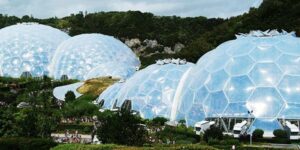
Eden Project in Cornwall, UK
Another exemplary application of biomimicry in building protection is the Beijing National Stadium, commonly known as the Bird’s Nest, which was designed for the 2008 Olympic Games. The stadium’s design was inspired by the interwoven structure of a bird’s nest, which not only provides a unique aesthetic but also offers significant protective benefits. The outer steel frame, resembling the twigs of a nest, provides an intricate network of support that distributes stress and enhances the structural integrity of the building. This design mirrors the way a turtle’s shell distributes impact across its bony plates, protecting the animal from external forces. Additionally, the Bird’s Nest structure includes a translucent membrane that covers the roof, shielding the interior from the elements while allowing natural light to penetrate. This combination of protection and resilience exemplifies how natural designs can inspire architectural solutions that are both functional and innovative.
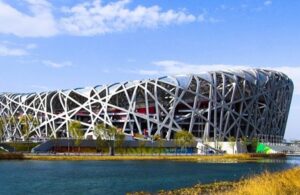
Beijing National Stadium
Energy Efficiency and Thermal Regulation
Building envelopes provide thermal insulation to maintain indoor temperatures, similar to how a turtle shell regulates body temperature. Turtles, being ectothermic, rely on external sources often basking on sun-heated rocks. The dark shells absorb sunlight, increasing body temperature. Most buildings achieve temperature regulation through HVAC systems while the building envelope provides passive methods of thermal insulation. During hibernation in oxygen-deprived environments, turtles switch to anaerobic respiration, using glucose to supplement oxygen. The cloaca and skin of the turtle take in the water molecules and absorb the oxygen needed for its still body. The byproduct of this transition is lactic acid, which has the potential to be lethal to a turtle. Here, the molecular scaffolding structure of the shell absorbs the acid and releases a bicarbonate to neutralize it, like a Tums tablet. The shell allows for the turtle to regulate its body temperature through an unusual method of respiration.
Perhaps, building envelopes can use advanced materials and designs to provide more active management of heat transfer, improving energy efficiency and indoor comfort. While traditional building materials such as aluminum, glass, stone and metals provide strong structural support, innovative materials can reduce energy consumption, paralleling the turtle shell’s role in anaerobic respiration. Depending on the needs of the tenants, building envelope materials like phase-change materials (PCMs) or aerogels could adapt to improve energy efficiency, like how a turtle’s metabolism switches when the need for oxygen changes during hibernation.
Another example of biomimicry in action is the Eastgate Centre in Harare, Zimbabwe, designed by architect Mick Pearce. Inspired by termite mounds, which naturally regulate temperature through a complex system of tunnels, the building uses passive cooling and ventilation strategies that drastically reduce the need for air conditioning. This design allows the building to maintain a stable internal temperature with minimal energy consumption, much like how a turtle’s shell helps regulate its body temperature. The Eastgate Centre demonstrates how integrating natural principles into building design can lead to significant energy savings and a reduced environmental footprint.
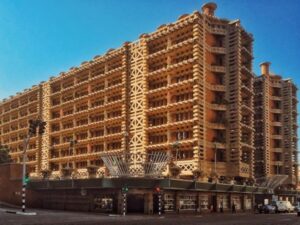
Eastgate Centre in Harare, Zimbabwe

Eastgate Centre in Harare mimicking Termite Mounds
Water Efficiency and Moisture Management
Turtle shells are not only remarkable for their protective and structural functions but also for their efficiency in managing water. The keratinized scutes that cover the shell provide a waterproof barrier, helping turtles retain moisture and protect against water loss, especially for terrestrial species. This natural design ensures that the turtle remains hydrated and shielded from the harmful effects of excessive moisture or drying out. Similarly, in the realm of architecture, building envelopes are designed with water efficiency in mind, incorporating materials and techniques that manage water to prevent damage and maintain the building’s integrity.
Regarding Water Resistance and Waterproofing, just as the turtle shell acts as a barrier to water, preventing it from seeping into the body, building envelopes are often designed with waterproofing layers to protect the interior from moisture intrusion. These layers, which can include waterproof membranes, sealants, and vapor barriers, are crucial in preventing leaks and managing condensation, particularly in climates with heavy rainfall or high humidity.
The Seattle Central Library, designed by Rem Koolhaas and Joshua Prince-Ramus, incorporates a sophisticated waterproofing system to manage the region’s frequent rain. The building’s exterior envelope includes a curtain wall system with double glazing, which not only enhances thermal performance but also prevents water infiltration. Additionally, the roof is designed with an advanced drainage system that channels water away from the structure, protecting it from potential water damage while maintaining the building’s aesthetic appeal.

The Seattle Central Library
Another strategy is Water Repellency and Drainage Systems. The streamlined shape of a turtle shell helps water flow off smoothly, reducing the chances of water pooling or penetrating the shell. In a similar way, building envelopes can be designed to repel water and manage its flow efficiently. Sloped roofs, overhangs, and drainage systems are all architectural features that help buildings shed water, much like the turtle’s shell. These features ensure that water is directed away from the building, reducing the risk of leaks, mold growth, and structural damage.
The Eastgate Centre, designed by architect Mick Pearce, mentioned before for its energy efficiency, not only uses natural ventilation inspired by termite mounds but also features a design that efficiently manages water. The building’s façade includes sloped surfaces and carefully positioned drainage channels that ensure rainwater is quickly and effectively drained away from the structure. This design reduces the need for extensive waterproofing and minimizes the risk of water damage, contributing to the building’s overall sustainability.
Another strategy used by turtles to manage water efficiently is their adaptive water management. In some environments, turtles must adapt to varying moisture levels, relying on their shells to manage these changes. Similarly, modern buildings are increasingly incorporating adaptive water management systems into their envelopes. These systems can adjust to changing environmental conditions, managing water more efficiently and ensuring the building remains dry and safe.
The Bullitt Center, often referred to as the “greenest commercial building in the world,” features a water management system integrated into its envelope design. The building’s roof is designed to capture and filter rainwater, which is then used for non-potable purposes throughout the building. This system not only conserves water but also reduces the building’s impact on local water resources. The building envelope includes features that prevent water infiltration while allowing for natural ventilation, further enhancing its sustainability.
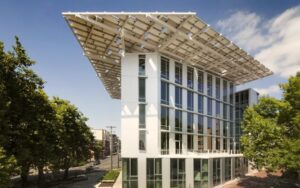
The Bullitt Center
The water efficiency observed in turtle shells offers valuable lessons for modern architecture. By designing building envelopes that manage water as effectively as a turtle’s shell, architects and engineers can create structures that are more resilient, sustainable, and in harmony with their environment. Whether through advanced waterproofing systems, efficient drainage designs, or adaptive water management technologies, the principles found in nature can guide us toward a future of smarter, more efficient buildings.
Looking Forward: Nature-Inspired Innovations and Emerging Technologies
The comparison between turtle shells and building envelopes reveals a wealth of insights that can fundamentally transform our approach to building design and construction. By studying the natural efficiency, protection, and adaptability of turtle shells, engineers and architects can create structures that are not only resilient, energy-efficient, and sustainable but also innovative in ways that push the boundaries of current design practices.
As we look to the future, the potential for advancements in building technology inspired by nature is immense. Emerging technologies, such as smart materials that can self-heal like the regenerative properties of turtle shells, and AI-driven design processes that optimize structural forms by mimicking natural patterns, are beginning to reshape the landscape of architecture and engineering. Adaptive building envelopes that respond dynamically to environmental changes—much like a turtle adjusts to varying conditions—offer exciting possibilities for the next generation of sustainable buildings.
The integration of biomimicry with cutting-edge technologies opens new avenues for innovation. Imagine buildings that, like living organisms, can monitor and adjust to their surroundings in real-time, using advanced sensors and AI algorithms to enhance energy efficiency and occupant comfort. These advancements are not just theoretical; they are rapidly becoming a reality as the industry embraces the wisdom of nature alongside technological progress.
The journey from nature to architecture is ongoing, and as we deepen our understanding of the natural world, we unlock new opportunities for groundbreaking innovation. In an era where sustainability and efficiency are paramount, embracing the principles of biomimicry in our engineering practices is not just an option—it is imperative. The lessons from turtle shells are merely the beginning of what nature has to offer. By harnessing these time-tested designs and integrating them with modern technologies, we can pave the way for a future where our buildings are as resilient, adaptive, and intelligent as the ecosystems that inspire them.
As these advancements continue to evolve, we can expect to see real-world applications in projects ranging from high-performance skyscrapers to sustainable residential developments. By integrating smart materials and AI-driven designs, the future of building technology will not only meet the demands of today but anticipate the challenges of tomorrow. For instance, smart materials like self-healing concrete are already being tested in various projects, offering a glimpse into how buildings of the future might maintain their integrity with minimal human intervention. Similarly, AI-driven design tools are being employed to optimize building forms based on natural patterns, ensuring both structural efficiency and aesthetic harmony.
How will you incorporate the lessons from nature into your next design? The possibilities are endless, and the potential impact is profound.
By Aquinas Engineering
